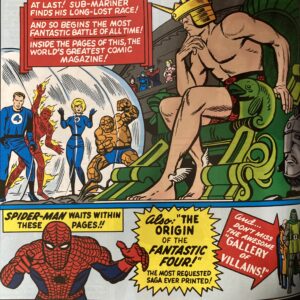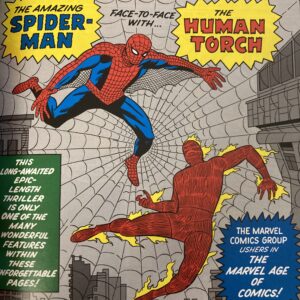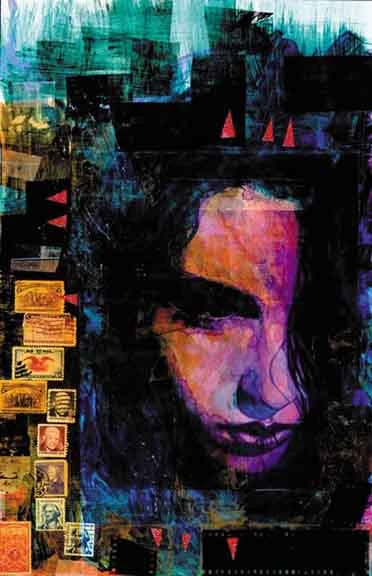
Introducing Jessica Jones: a super-powered private investigator with a sailor’s mouth and a knack for finding trouble. In Jessica Jones: Alias vol. 1, we get to revisit her first appearances, reprinted from the pages of Alias #1-9. Before we continue, readers beware: this comic book is not for kids and contains explicit content.
Meet Jessica Jones
Alias was written by Brian Michael Bendis with art by Michael Gaydos. The story centers around Jessica Jones, former superhero and current P.I. She is hired by a woman to find her missing sister, and ends up unwittingly jumping deep in the middle of a conspiracy.
Jessica Jones is not an ideal superhero. She is not as strong as other heroes, cannot fly very well, cusses, gets drunk, has some trouble relating to those around her, and most importantly, has serious self-loathing issues. But underneath her flaws is a person that ultimately wants to do good. A person who will strive to do the right thing, even at the expense of her own well-being.
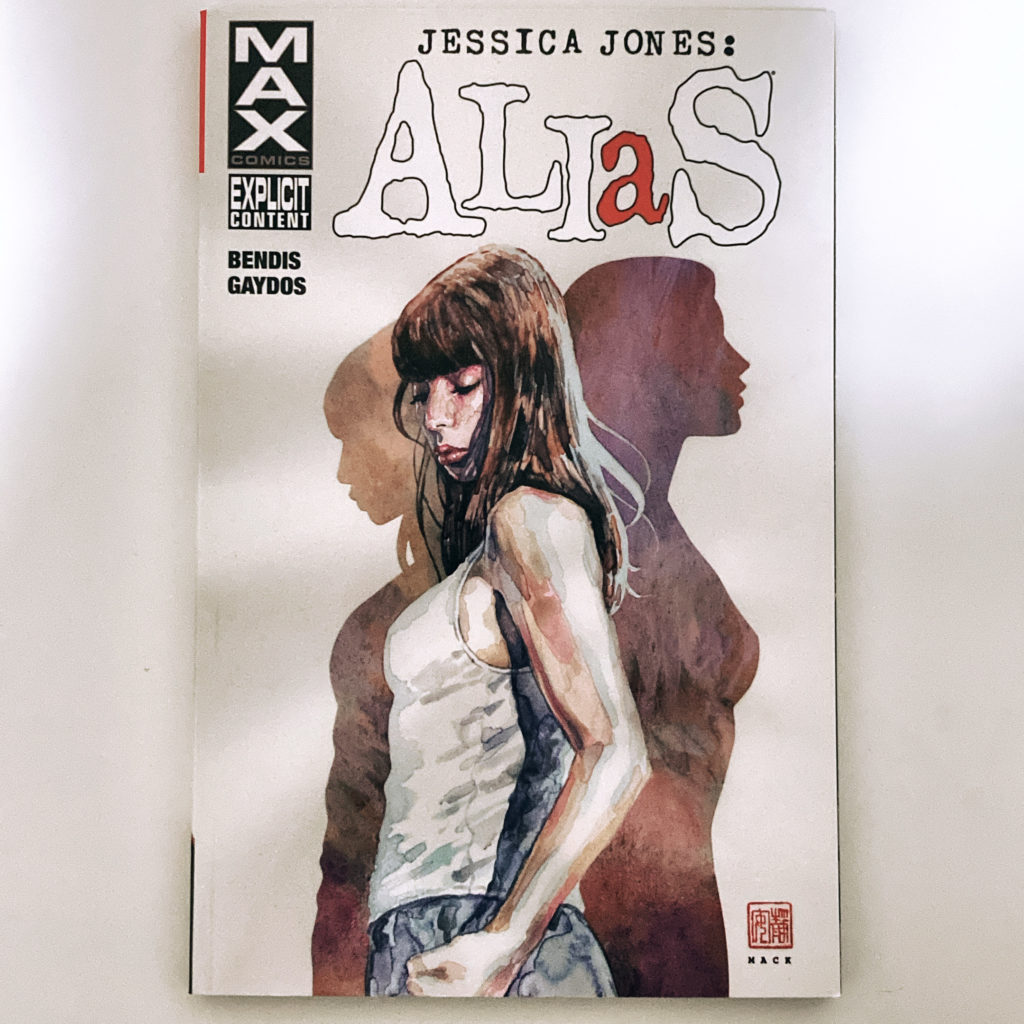
Alias is a street-level story set in the Marvel universe
At its heart, Alias is a noir comic book that follows a private eye working in a crime-ridden city. The raw dialogue combined with equally raw art gives the story a “street-level” feeling. The stakes and dangers are not “world-ending” like in other superhero comics, but rather they are more localized. Despite the lower stakes, Alias presents dangers that feel more down-to-Earth, making the story much more real to the reader.
A cool thing about Alias is that we get to see Jessica interact with the larger Marvel universe. She is friends with Carol Danvers (a.k.a. Ms. Marvel), she has an ex-boyfriend that works for S.H.I.E.L.D., and she unwittingly discovers Captain America’s secret identity. These slice-of-life interactions help present the Marvel universe as the “world outside our window”; even more so than other superhero comics.
Unfortunately, the second half of this arc begins to depend more and more on the “larger Marvel universe”. What starts as street-level investigations tend to evolve into larger problems requiring the intervention of S.H.I.E.L.D. or the Avengers. I’d hate to spoil the ending of the main arc in this book, but I want to save you some disappointment: if you want to follow a private investigator as she uncovers and solves a conspiracy using her wits and skills, you will not find that in Alias. Instead, you’ll see the protagonist uncover the conspiracy, only to get sidelined when the “real heroes” save the day.
Do Jessica Jones’ flaws outshine her virtues?
What’s even worse is that the story doesn’t make any effort to hint that Jessica would have been able to save the day (or at least save herself). I am not sure if this is a decision to kind of present a more realistic take on super-powered individuals and how the world of superheroes works (but if it is, then Bendis did a better job in the pages of Ultimate Spider-Man).
Unfortunately, the story does a better job at highlighting Jessica’s flaws than her virtues. If, at heart, she is a good person held back by her past and her flaws, then this story could have worked better if it showed some sort of conflict between her virtues and her flaws. But what we see is not really conflict, but more of an uneasy harmony between the two.
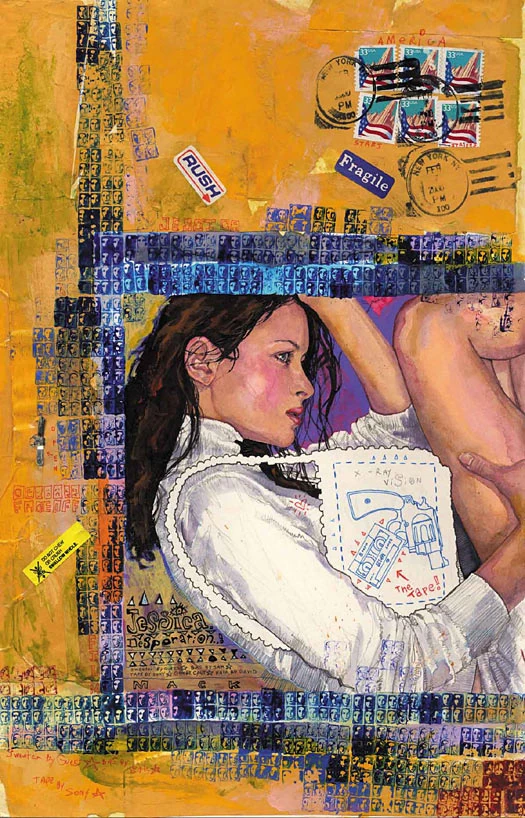
Warning: Explicit Content
This leads me to the explicit content in the comic book. The pages of Alias vividly showcase Jessica’s flaws. We get to see her engage in a lot of self-destructive behavior. This includes self-loathing one-night stands (which she internalizes by thinking: “I just want to feel something. It doesn’t matter what. Pain. Humility. Anger. I just want to feel something different.”), her continuous feelings of unworthiness (leading her to try to find comfort in people who don’t really care about her, while pushing away those who do), and other toxic behavior.
At times, the explicit nature of the book serves to ground the comic book. Bendis and Gaydos take away the comforts of superhero censorship, and by doing so, take away our feeling of safety when reading the story. But other times, the explicit content becomes gratuitous, no longer serving to push the story forward. For the first 20 pages or so, all the cussing feels like something you’d hear in the world around you, but after that, it becomes so recurring that it makes me thing “Who talks like this?” It’s almost like, in an attempt to ground the comic in realism, we end up reading a caricature of what “comic book realism” is.
The art sets the tone while the dialogue drives the story
Despite these cons, in a way, Alias seems to achieve its intended purpose: to deliver a gritty and fun story while pushing the boundaries of the modern superhero genre. Gaydos’ art is the perfect companion to Bendis’ plot and script. There’s something that feels raw about the art (including colors by Matt Hollingsworth and the sick covers by David Mack) that helps set the whole tone for this story. I hate that I’m saying this, but I was at first shocked by how ugly everyone in the story looked and how dark the colors were, but these all helped me prepare for the plot, dialogue, and twists in the tale. This story could not have worked with any other artist.
Final Thoughts
Alias is a good comic book to read, and one of my favorites. It is captivating and keeps you on the edge of your seat. It will make you root and care for the protagonist, Jessica Jones. And it will present a different side to the Marvel universe; a side that helped me in how I viewed other comics of that time. If you can power through incessant cuss words and Bendis’ long expository dialogues, then you’ll enjoy this comic book. If you have “superhero fatigue” after countless MCU releases, then this comic is also for you.
